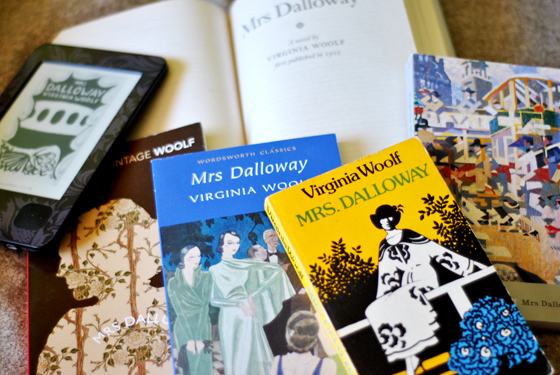Virginia
Woolf was born in London in 1882, the daughter of the
Victorian literary critic Leslie Stephen. She
lived and was educated in a highly intellectual atmosphere at home,
as her father was friendly with many of the main literary figures of
the period, among them Henry James. Her mother died when
she was 13 and the loss influenced her profoundly. It was
soon after her mother’s death that she had the
first of a series of nervous breakdowns which affected
her all her life. When her father died in 1904, she moved to a new area of
London, Bloomsbury, where she founded a close circle of
intellectuals, who became known as the “Bloomsbury Group”.
Among them there was Leonard Woolf, who later became her husband, and the
novelist E.M. Forster, besides painters and art critics.
The Bloomsberries
shared the desire to challenge the strict Victorian social norms, and
demonstrated a sexual freedom that was ahead of their time. They were
rather elitist and exclusive. They were highly criticized for their snobbishness
and selfishness. The group was also reproached with its pacifism during the
First World War.
In 1913, after completing her first novel, The Voyage Out, she attempted suicide following another of her
recurrent mental breakdowns. In 1917 she
and her husband founded the Hogarth Press which published the best experimental
works of the period besides her own works. Mrs Dalloway (1925), To the Lighthouse
(1927), The Waves (1931) and Between the Acts (1941) are her most famous novels. Her love affair
with Vita Sackville-West inspired her to write a fantasy Orlando
(1928), the story of an attractive nobleman who lives through different centuries
changing sex several times. Besides being a novelist, she was an essayist,
journalist and art critic. Her judgments were both highly regarded and feared for
their uncompromising frankness. The
Common Reader (1925-32) contains the best critical work. She was also deeply
interested in feminist themes. Discrimination against women is examined in A Room
of One’s Own (1929), while the
dominant role played by men in society is the theme of Three Guineas (1938). She eventually committed suicide by drowning in the River Ouse in 1941.
The work of Virginia Woolf marks an important step in the development of
the novel, as she consciously rejected
some of the main conventions of
the realistic fiction of the Victorian Age
and developed a new way of expressing a different perception of reality. For her,
events were not important in themselves.
What was important was the impression they made on the characters who
experienced them. The great technical innovation she introduced in narrative
technique was to shift the point of view inside her characters’ minds, thus
revealing them through their own thoughts, sensations and impressions. This led
to the abandonment of the chronological ordering of events. Her novels involve constant
shifting backwards and forwards in time according to the sensations and
recollections aroused in the characters by the events they are
experiencing. Virginia Woolf’s fiction is often characterized by two levels
of narration, one of external events
arranged in chronological order and one
of the flux of thoughts arranged according
to the association of ideas. Her
novels rely on very flimsy plots. They focus on internal thoughts, feelings and reactions in a highly evocative and figurative language
which follows the random associations.



No comments:
Post a Comment